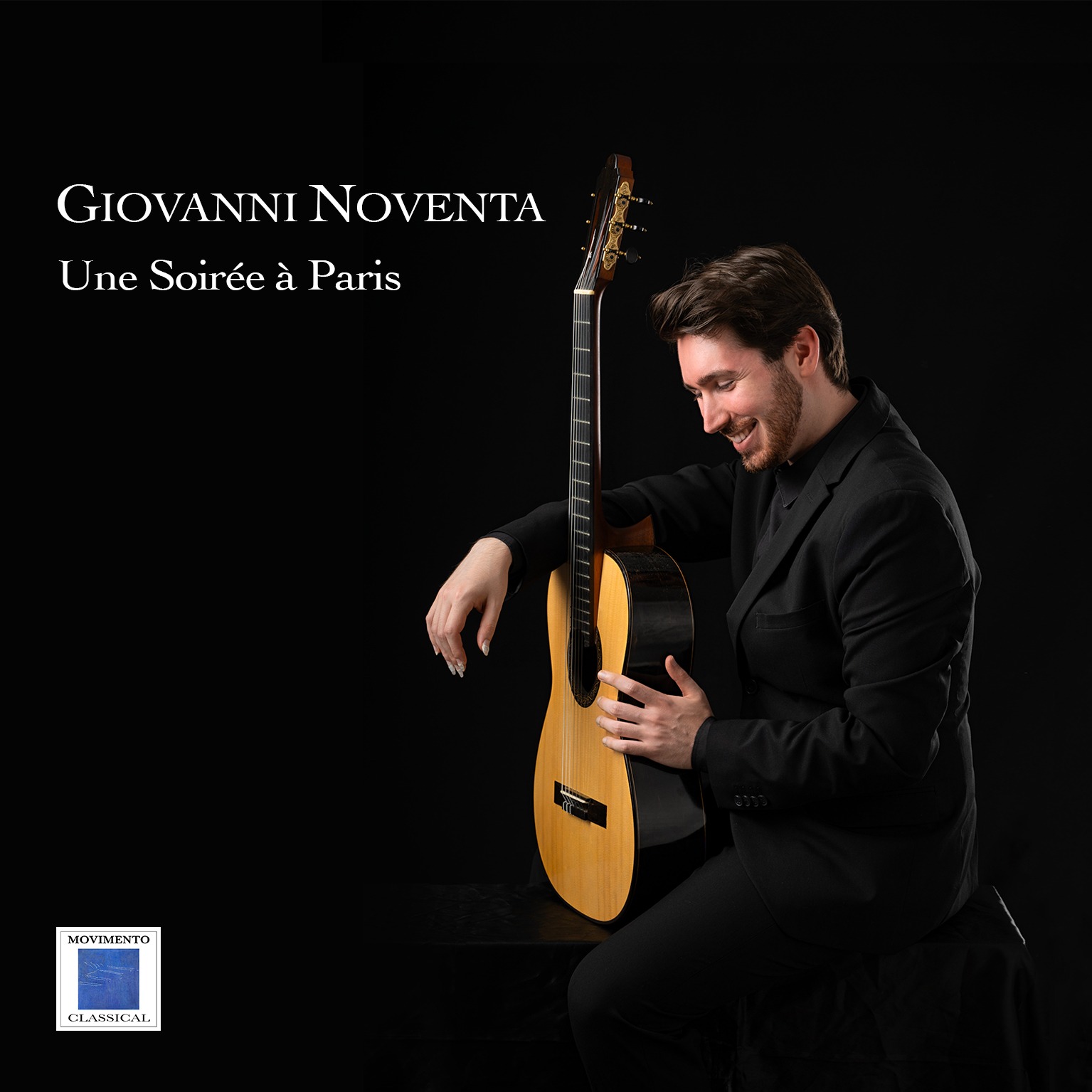
UNE SOIRÉE À PARIS
TRACK LIST
01. DIONISIO AGUADO: Fandango variado op. 16
02. NICCOLÒ PAGANINI: Ghiribizzo n. 16 In cor più non mi sento
03. NICCOLÒ PAGANINI: Sonata n. 13
04. NICCOLÒ PAGANINI: Sonata n. 33
05. FERNANDO SOR: Les folies d’Espagne op. 15a
06. FERNANDO SOR: Andante Largo op. 5 n. 5
07. FERNANDO SOR: Introduzione e variazioni sull’aria “Malbroug” op. 28
08. FERDINANDO CARULLI: 12 Petits Morceaux caractéristiques op. 204 – L’Amour
09. FERDINANDO CARULLI: 12 Petits Morceaux caractéristiques op. 204 – Le Calme
10. FERDINANDO CARULLI: 12 Petits Morceaux caractéristiques op. 204 – L’Agitation
11. NAPOLÉON COSTE: Les soirées d’Auteuil op. 23
12. NAPOLÉON COSTE: Fantaisie sur deux motifs de “La Norma” de Bellini op. 16
13. MATTEO CARCASSI: Air Varié op. 8
EN
The works brought together here are linked by a subtle fil rouge, which takes us back to the first decades of the nineteenth century, when in Paris – at that time considered the world capital of music – the guitar had a long season of success; this was due to the presence of numerous Italian and Spanish virtuosos, to whom we owe concert pieces and didactic works that laid the foundations of the technique and repertoire of the instrument, and still constitute an essential vademecum for the training of any guitarist. The power of the attraction of the metropolis is demonstrated by the fact that almost all the composers represented here – Dionisio Aguado (1784-1849), Fernando Sor (1778-1839), Ferdinando Carulli (1770-1841), Matteo Carcassi (1796-1853) and Napoléon Coste (1805-1883) – spent a long time there, and some of them chose it as their permanent residence, like Sor, Carulli and Carcassi. It was in Paris that Aguado and Sor met for the first time and formed a lasting friendship. (Coste, Sor’s student was the only French-speaker in the group, Swiss by birth but Parisian by adoption.) As for Paganini, we all know his passion for the instrument, which he started to study in 1801, while temporarily interrupting his violin activity. He soon became a virtuoso of it and during the course of his life, he dedicated 140 pieces to the guitar, among which solo sonatas or with violin, numerous distinctive pieces and 15 quartets for guitar and strings stand out.
The programme of the CD allows for a broad overlook at the typical compositions of the time which were very appreciated by the audience: captivating pieces that offer the author-interpreter the opportunity to show his virtuosity, often exploiting famous opera arias, popular melodies or well-known dance rhythms added in free-form fantasies usually opened by a slow introduction, followed by the chosen melodies developed into variations; or sometimes examples of “absolute music”, such as: sonatas, minuets, single movements in a slow tempo, or vice versa short pieces with programmatic titles (This is the case with Carulli’s three Petits Morceaux) that suggest a certain emotional climate.
Maurizio Giani
IT
Le opere qui riunite sono legate da un sottile fil rouge, che ci riporta ai primi decenni dell’Ottocento, allorché a Parigi – all’epoca considerata capitale mondiale della musica – la chitarra conobbe una lunga stagione di successi grazie alla presenza di numerosi virtuosi italiani e spagnoli, cui si debbono brani da concerto e lavori didattici che posero le basi della tecnica e del repertorio dello strumento, ed ancor oggi costituiscono un imprescindibile vademecum per la formazione di ogni chitarrista. Il potere di attrazione della metropoli è testimoniato dal fatto che quasi tutti i compositori qui rappresentati – Dionisio Aguado (1784-1849), Fernando Sor (1778-1839), Ferdinando Carulli (1770-1841), Matteo Carcassi (1796-1853) e Napoléon Coste (1805-1883) – vi soggiornarono a lungo, quando non vi presero residenza stabile, come Sor, Carulli e Carcassi; e fu a Parigi che Aguado e Sor si incontrarono per la prima volta, e strinsero una duratura amicizia. (Allievo di Sor è l’unico francofono del gruppo, Coste, svizzero di nascita ma parigino d’adozione.) Quanto a Paganini, è ben nota la sua passione per lo strumento, che iniziò a studiare nel 1801 interrompendo temporaneamente l’attività violinistica; ne divenne presto virtuoso, e nel corso della sua vita dedicò alla chitarra circa 140 brani, in cui spiccano sonate solistiche o con violino, numerosi pezzi caratteristici e quindici quartetti per chitarra e archi.
Il programma del cd consente un ampio sguardo alle tipiche composizioni del tempo, assai gradite dal pubblico: brani accattivanti che offrono all’autore-interprete la possibilità di mettere in mostra il proprio virtuosismo, non di rado sfruttando celebri arie d’opera, melodie popolari o ritmi di danza ben noti inseriti in fantasie in forma libera, aperte di solito da un’introduzione lenta cui seguono le melodie prescelte elaborate in variazioni; oppure esempi di “musica assoluta” come sonate, minuetti, singoli movimenti in tempo lento, o viceversa brevi pezzi con titoli programmatici (è il caso dei tre Petits Morceaux di Carulli) che suggeriscono un determinato clima emotivo.
Maurizio Giani